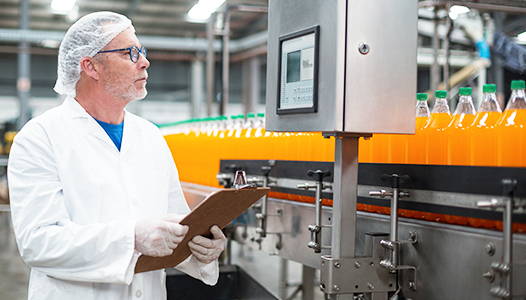Digitize and optimize your plans in the virtual world

Food processing industries operate in a world that’s constantly disrupted by a rapidly growing urbanized population, changing technologies and increasingly regulated markets. The variability of supply quantity and quality is becoming more common. Consumers are demanding consistent quality, taste and availability at fair prices. Supermarkets are pressuring food producers to reduce margins, support promotions and maintain brand awareness, even as they increase investment on their own branded items.
These are some of the most complex and dynamic value chains on the planet. Food producers must balance the demands of customers and retailers by effectively managing the variability of supply quantity and quality.
How can companies extract more value in an industry where margins are often slim and generic brands eat into market share? The answer is a two-step process that begins by accurately modelling your end-to-end value chain dynamics before KPI-driven planning and optimization are applied to the resultant model.
In this post, I’d like to focus on modelling the value chain and its interconnections to get a clear understanding of its impact on market share, margins and customer satisfaction. If you’d like to learn more about KPI-driven planning and optimization, please refer to this white paper.
Modeling the Value Chain
Imagine that you’re a delivery driver, and your GPS unit accurately displays arrival times and street locations only 90 percent of the time. How would that 10 percent failure rate impact your daily deliveries and the associated variable costs? How would your customers respond to the fact that your products only appear on retail shelves 90 percent of the time? How would supermarkets and sales channels respond? To put this in perspective, a percentage-point increase in sustained process improvement on a $500 million operation would add $5 million in profit.

In order to drive the next level of optimal performance, your technology must be able to accurately model every aspect of your value chain. Approximations restrict the performance of your value chain. Unlocking its full potential would require the technology you evaluate to accurately model:
- Every aspect of the value chain directly under your control such as production equipment and flow, warehouse and logistics capacity and movement, and more
- All constraints, business rules, variables and parameters of your value chain, including elements such as cleaning in place (CIP), maintenance routines, changeovers, settling times (for yogurt or frozen meals) and staff certifications
- The unique behavior of your value chain for each time horizon
- The KPIs of each operation across the value chain, and for each time horizon
Every operation will have a vastly different value chain model with vastly different constraints, variables and KPIs. Modelling your value chain in a virtual environment gives you the flexibility to plan and optimize your business without being constrained by the limitations of your resources or location. With information intelligence, you can make the best decisions to effect enterprise-wide improvements in operational agility, anticipate challenges, reduce costs and increase customer satisfaction.
In an increasingly digitized world, food producers must optimize their food processing, production and delivery processes to gain a competitive advantage. But this is just the tip of the iceberg.